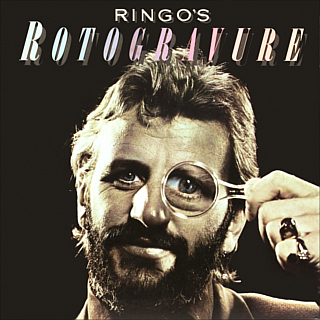After a promisingly raucous blast of energy, “A Dose Of Rock ‘N Roll” limps into place with a lot of Peter Frampton wah-wah. There’s a clever quote of Bruce Channel’s “Hey Baby” at the end, but then the next track is a full-fledged cover of the tune. By now Paul McCartney was a hot ticket again, yet “Pure Gold” is hardly one of his hidden treasures. He and Linda add superfluous backing vocals, but the highlight of the track is Klaus Voormann’s bass playing. A song that does work is Ringo’s own “Cryin’”, written naturally with Vini Poncia, and sounding like an excellent distillation of Beaucoups Of Blues. (Sneaky Pete Kleinow also makes his second appearance on a solo Beatle album.) Producer Arif Mardin’s touch is most obvious on the slightly disco-fied “You Don’t Know Me At All”.
“Cookin’ (In The Kitchen Of Love)” is notable for being the only new Lennon composition (and performance) released in the second half of the ‘70s, and it’s positively flimsy. Still, we like hearing his “two thee fo” before the coda. George was represented by “I’ll Still Love You”, a slightly syrupy but still pretty ballad that dated from 1970. (He was apparently not happy with either the mix or Lon Von Eaton’s guitar solos, and added another lawsuit to the intra-Beatle pile.) Meanwhile, Eric Clapton donated the leftover “This Be Called A Song” as well as his noodling throughout, fighting for space in the mix with steel drums. As if that exotic sound wasn’t enough, a mariachi band features on “Las Brisas”, which Ringo wrote with then-paramour Nancy Andrews. “Lady Gaye” is curious, being co-written with one Clifford T. Ward, who’d had a mild hit somewhere with an unrelated song called “Gaye” and had another song called “Birmingham”, which was the musical inspiration for this. All in all, a lot of work for a piece of fluff. For no apparent reason other than to stretch the album further past a half-hour, a closing 90-second ramble called “Spooky Weirdness” isn’t exactly false advertising, but it’s also unnecessary.
Just as Goodnight Vienna wasn’t as good as Ringo, so does Ringo’s Rotogravure suffer from the Xeroxing. It wasn’t enough for Ringo to get by on his personality, and without decent songs he was lost, no matter how many of his famous friends contributed their talents.
Ringo Starr Ringo’s Rotogravure (1976)—2½

No comments:
Post a Comment